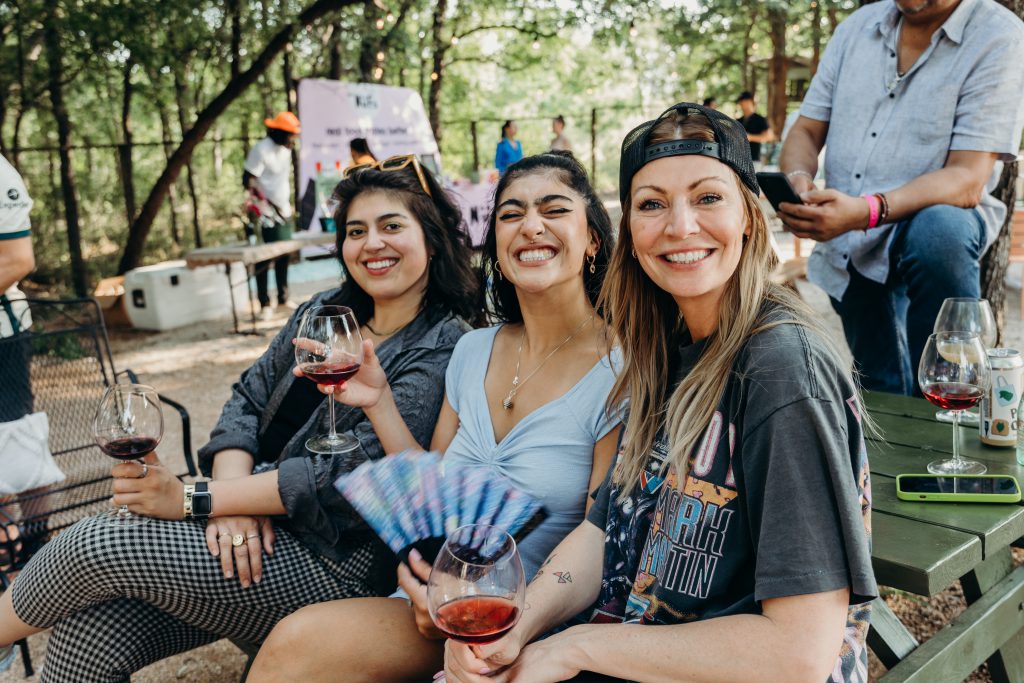The wine industry has historically lacked diversity, but that doesn’t mean progress isn’t being made.
To help build a more equitable industry, Rania Zayyat and Cara Bertone are spearheading an initiative called Lift Collective, which quite literally is lifting up and empowering others to advance their careers in wine. In 2022, the platform introduced a program with a special focus on entrepreneurship.
“Our program is really designed to provide support to historically ignored communities in the wine industry including women, trans men, trans women, non-binary folks, persons from racially diverse or intersectional communities, persons with disabilities, and persons from LGBTQIA+ communities, etc.,” Lift Collectives Founder and President Zayyat said. “We did have mostly women apply in this first year, which definitely shows a disparity in entrepreneurial support for women.”
We caught up with Zayyat and Bertone to learn more.
Q: Tell us first about Lift Collective. What is it and what inspired you to launch it?
A: Lift Collective is a community-centered, multi-channel platform advocating for equity and inclusion in the wine industry. We host annual programming including a national conference, proprietary research, community partnership events, and our newly launched Entrepreneurship Program. We prioritize collaborating with experts and key opinion leaders in the wine industry to ensure that all content leads with and celebrates diverse perspectives.
In 2019, Lift Collective was started as a platform to connect women in the wine industry; to empower them to share their experiences; and to work together to create tangible solutions to lift all women in wine.
In 2021, we evolved and expanded our mission to advocate for equity and inclusion for all identities in the wine industry that have felt ignored or excluded. Our work now centers around tearing down barriers to entry in wine and rebuilding the industry to become more accessible and welcoming for all. We achieve this equitable programming through events like our annual conference and the new entrepreneurship program.

Q: Lift Collective’s inaugural entrepreneurship program is designed to make space for underrepresented wine entrepreneurs. How is it achieving this objective? What are some of the key pillars of the program?
A: Since its inception, Lift Collective has been very active in building community with other organizations throughout the country to provide support in our initiatives to help lift the voices of those most underrepresented. Through working with our community partners in the wine industry, we collected more than 50 submissions during our application drive. Of those submissions, 90 percent were women of color. We narrowed those submissions to five entrepreneurs to comprise the first cohort.
We have 4 Key Pillars that make up the Program:
• Foundations: Business foundations and sustainability mindset in the wine industry
• Business Growth: Tactics for launch and growth of business
• Sales + Marketing: Tips and tools for Pitching, Selling, Closing
• Implementation: Group Exercises, Q&A, and implementation
Q: What makes this program different from others looking to create a more inclusive wine industry?
A: There are many organizations across the country working toward making the wine industry more inclusive through mentorship programs, educational scholarships, travel scholarships, and on-the-job training. We applaud all the efforts that are moving our industry to be more equitable.
We launched an Entrepreneurial Scholarship in 2021, and with that, we realized there are so many more opportunities to support and invest in small businesses in the wine industry to help them realize their potential and scale.
In early 2022, we conducted an industry survey that provided more insights into the needs of underrepresented wine entrepreneurs. That valuable information from our community was used to design the Lift Collective Entrepreneurship Program (LCEP). We feel the program curriculum will provide multiple layers of support for entrepreneurs through a $5,000 financial investment in their business, an opportunity to forge strategic relationships with wine industry thought leaders, access to ongoing mentorship, and community building with facilitators and members of the entrepreneurial cohort.

Q: Why did you decide to make the program virtual? What are the benefits of doing so?
A: We decided to make the program virtual because it allowed this unique opportunity to be open to wine entrepreneurs across the country. It also allowed us to work with wine industry thought leaders, both domestically and globally.
Q: How do you go about selecting participants for the program? What qualities do you look for?
A: We have a committee of eight individuals who work directly and indirectly in the wine industry and actively support causes that amplify equity and inclusion.
The committee selected entrepreneurs who are in the 1-3 year phase of starting their businesses and operate in certain sectors of the wine industry including: production, sales, hospitality, media and journalism, and community events. We selected entrepreneurs based on overall need, and those who we feel we can help take their business to the next level through the curriculum and resources provided in our program.
Q: How can wine entrepreneurs get involved in future programs?
A: This will be one of our evergreen programs so applications will open again in summer 2023. Additionally, all of the sessions and workshops in the program are led by different wine industry and entrepreneurial thought leaders so we are always looking for new people to connect with who are interested in leading a session and/or mentoring our entrepreneurial cohort.
Q: How do you foresee the program evolving over the next 3-5 years?
A: We intend to grow the number of entrepreneurs we support each year as the program evolves. In this inaugural year, we will be collecting a lot of feedback from our first entrepreneurial cohort so we can continue to fine-tune and better the program year-to-year.
Additionally, while the program is exclusively virtual this first year, we hope to add more interactive and in-person components in years to follow.






